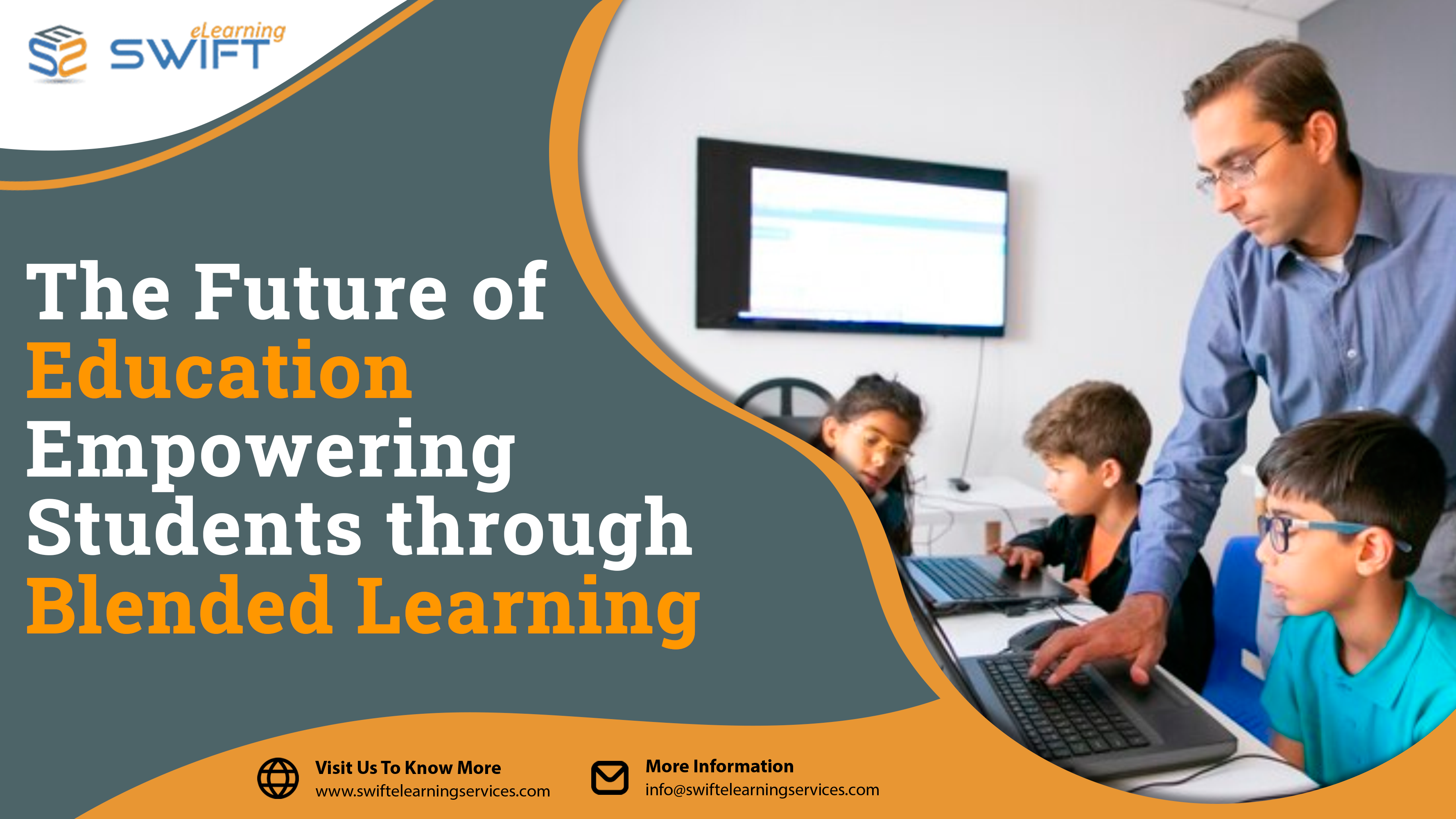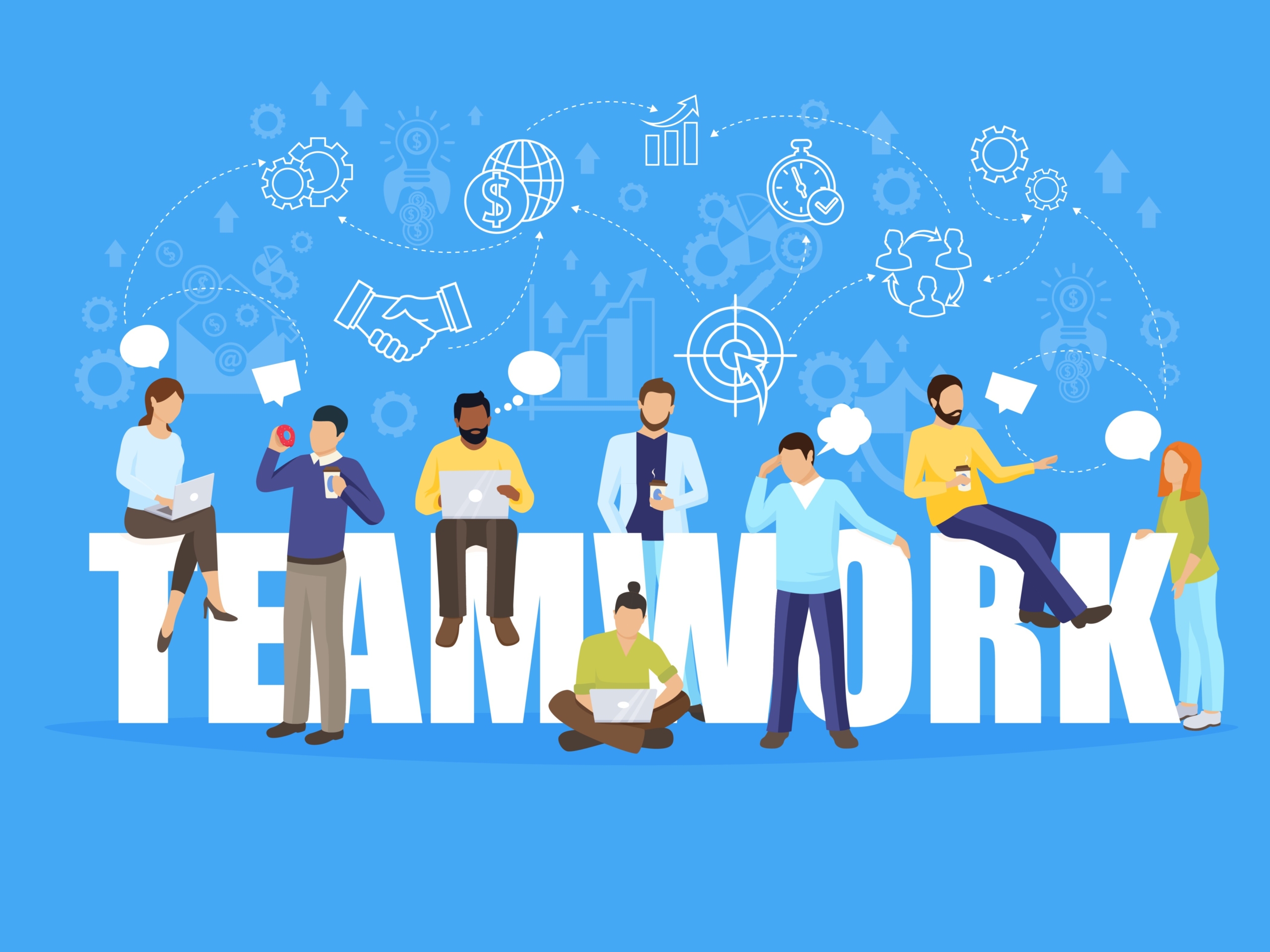The Future of Education: Empowering Students through Blended Learning
In the ever-evolving landscape of education, where the chalkboard is gradually being replaced by digital screens, a new paradigm is emerging — blended learning.
Blended learning, a fusion of traditional classroom teaching and digital technology, is not just a trend; it’s a transformation that is reshaping how students learn, engage, and excel.
As we step into this future, it’s essential to explore how blended learning is empowering students and revolutionizing the educational experience.
Blended Learning: Tailoring Education to Individual Needs
One of the most significant advantages of blended learning is its ability to cater to the diverse needs of students. Through online platforms, students can access a wealth of resources tailored to their learning styles and pace.
Whether a student needs extra practice in mathematics or wants to delve deeper into a historical era, personalized learning paths are now a reality, ensuring no one is left behind.
We offer adaptive learning modules, tailoring the content to individual student abilities and learning objectives. This personalization enhances understanding and retention, as students can focus on areas where they need more help.
Transforming Education through Blended Learning
The future of education is being shaped by innovative approaches that enhance learning experiences and empower students. One such approach is blended learning, which combines traditional face-to-face instruction with online resources and digital tools.
Here are several ways in which blended learning empowers students and transforms education:
1. Accessibility Advancements in Blended Learning
Digital resources make education more accessible to students with diverse needs. Blended learning makes education accessible to everyone, regardless of geographical location or physical abilities.
Digital resources and tools enhance inclusivity, offering features like subtitles, interactive transcripts, and assistive technologies. This means that individuals with disabilities can engage with the material effectively, fostering a more inclusive learning environment.
2. Enhancing Engagement through Blended Learning
Engagement is the cornerstone of effective learning. Blended learning incorporates multimedia elements such as videos, simulations, and interactive quizzes.
These dynamic resources not only capture students’ attention but also transform passive learning into an interactive and engaging experience. As a result, students are more likely to retain information and develop critical thinking, and problem-solving skills.
3. Enhancing Learning Experiences with Quick Feedback
Gone are the days of waiting anxiously for exam results. Blended learning platforms provide instant feedback on assignments and assessments.
This immediate feedback loop empowers students to understand their mistakes and learn from them. Simultaneously, educators can identify learning gaps promptly, allowing for timely interventions and personalized guidance, thereby enhancing the overall learning experience.
4. Blended Learning’s Role in Fostering Collaboration
In the digital age, collaboration is not just a soft skill; it’s a necessity. Blended learning facilitates collaborative projects, online discussions, and peer reviews. These activities prepare students for the teamwork and communication skills required in the modern workforce. Moreover, virtual collaboration often transcends geographical boundaries, fostering a global perspective among students.
5. Building Resilience and Adaptability through Continuous Learning
Blended learning instills a culture of lifelong learning. With a myriad of online resources available, students are encouraged to explore beyond the classroom curriculum. This mindset of continuous learning prepares them for a future where adaptability and a thirst for knowledge are invaluable traits.
6. Refining Teaching Methods through Data Analysis
Blended learning generates a wealth of data — data that can be analyzed to gain insights into student performance and engagement patterns.
Educators can harness this data to refine their teaching methods, identify areas for improvement, and provide targeted support to students. In essence, data-driven insights lead to more informed decision-making, ensuring that the educational journey is as effective as possible.
7. Blended Learning’s Contribution to Digital Proficiency
Blended learning equips students with digital literacy skills essential for the modern workforce. As technology continues to shape various industries, students proficient in using digital tools will have a competitive advantage in the job.
8. Fostering Cultural Understanding through Virtual Classrooms
Online platforms connect students from different parts of the world, fostering cultural understanding and global awareness. Virtual classrooms enable interactions with peers from diverse backgrounds, preparing students to collaborate in a globalized society.
9. Impact of Parental Involvement in Blended Learning
Blended learning often includes communication tools that keep parents informed about their child’s progress. Increased parental involvement positively impacts students’ motivation and overall educational experience.
Benefits of Transforming Your Content with Us
When a singular learning approach isn’t tailored to meet your educational requirements, we offers a curated blend of delivery methods designed to align with your unique learning style.
We seamlessly integrate instructor-led training with interactive eLearning modules, crafting a unified and comprehensive learning journey.
Blended learning becomes especially valuable when certain aspects of the training necessitate in-person engagement, while others can be conveniently completed through self-paced online eLearning modules, accommodating learners’ schedules and preferences.
We carefully evaluate various blended learning models and strategies to determine the most suitable and impactful ones for our learners. This meticulous approach ensures that the educational content is not only effectively delivered but also thoroughly reinforced, enhancing the overall learning experience.
Our Process for Blended Learning Solution
We collaborates closely with you to create customized blended learning solutions, incorporating a variety of engaging methods that cater to your unique learning needs and goals:
1. Interactive eLearning Modules: We specialize in crafting interactive eLearning modules that captivate learners, fostering active engagement with multimedia elements, quizzes, and simulations, all designed to accommodate diverse learning styles.
2. Tailored Solutions: We customize content to meet your specific needs, ensuring that it aligns perfectly with your objectives and target audience.
3. Diverse Learning Styles: Our content transformation caters to a variety of learning styles, making it accessible to a broad spectrum of learners.
4. Measurable Results: We provide solutions that allow you to measure the impact and effectiveness of your transformed content, giving you valuable insights into your educational efforts.
5. Increased Accessibility: Transformed content can be accessible on multiple platforms and devices, making learning more convenient for your audience.
6. Seamless Integration: Our solutions seamlessly integrate with your existing educational infrastructure, minimizing disruptions and facilitating a smooth transition.
7. Assessments: We offer a range of tailored evaluation methods, encompassing quizzes, tests, and assignments, to effectively assess understanding and monitor progress in alignment with our service.
By integrating these methods, we deliver a holistic blended learning approach that meets the unique needs of learners, ensuring a comprehensive and enriching educational experience.
Contact us for Blended Learning Solution.
Our dedicated team is here to assist you and provide any assistance you may need.
In conclusion, blended learning is not just a technological advancement; it’s an educational revolution. By empowering students with personalized learning experiences, fostering inclusivity, promoting engagement, and preparing them for the demands of the future, blended learning is paving the way for a brighter, more accessible, and collaborative educational landscape.
As we embrace this future, we are not just changing how we teach; we are transforming the lives of students, making education a truly empowering and enriching experience for all.
Frequently Asked Questions (FAQs)
1. What is blended learning, and how does it differ from traditional education?
Blended learning is an educational approach that combines traditional classroom teaching with online resources and digital tools. Unlike traditional education, blended learning offers a personalized and flexible learning experience by integrating technology into the learning process.
2. How does blended learning empower students?
Our blended learning approach empowers students with personalized learning paths, promotes inclusivity, engages through multimedia content, offers real-time feedback, encourages collaboration, and equips students for lifelong learning in the digital age.
3. How does blended learning benefit students with diverse learning abilities?
Our blended learning approach supports students with diverse learning abilities through personalized experiences, customized resources, and inclusive accessibility features, ensuring that all learners can engage effectively with the material.
4. Can blended learning be implemented in all subjects and grade levels?
Our versatile blended learning approach is adaptable to a wide range of subjects and grade levels, from primary education to higher education, encompassing mathematics, science, humanities, arts, and more.
5. What skills do students develop through blended learning that are valuable for their future careers?
Our blended learning approach equips students with critical skills for their future careers, such as digital literacy, critical thinking, problem-solving, collaboration, and communication, all highly prized in today’s technology-driven and team-centric workplaces.

















